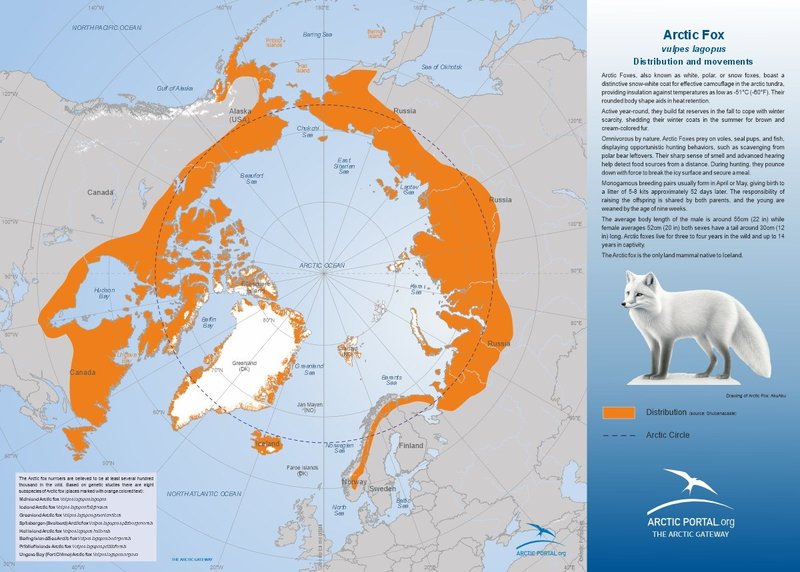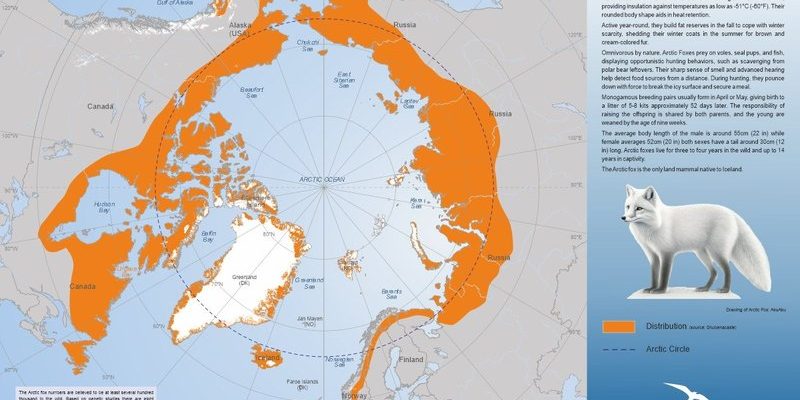
These little foxes are not just cute; they’re fascinating animals with a unique way of life. They thrive in some of the harshest conditions on Earth, and their homes are scattered across vast, remote areas. Let’s dig into where Arctic foxes live, how they adapt to their environments, and why their habitat is so crucial for their survival.
Understanding the Arctic Habitat
The Arctic is a region located at the northernmost part of our planet. It’s characterized by its extreme cold, frozen landscapes, and limited sunlight during winter months. When we talk about the habitat of Arctic foxes, we’re mainly referring to areas within the tundra biome. This biome has permafrost—permanently frozen ground—which influences the vegetation and animal life in the region.
Here’s the thing: Arctic tundra might seem barren, but it teems with life. During the brief summer months, wildflowers bloom, and the landscape comes to life with various species of plants. This burst of life serves as a crucial food source for Arctic foxes, among other animals. They primarily hunt small mammals, birds, and even scavenge from larger predators like polar bears. So, while it may look like an ice desert, it’s a bustling community beneath the frost.
Distribution of Arctic Foxes
Arctic foxes are found across a wide range of territories, which include Greenland, Iceland, parts of Canada, and Alaska. They also inhabit areas in Russia, particularly in Siberia. Essentially, if you look at a map of the Arctic Circle, you can find populations of these foxes snuggled into various habitats throughout this icy expanse.
Now, you might be wondering how far south these foxes can go. Interestingly, during summer migrations, some Arctic foxes venture farther south, into boreal forests, searching for food. However, their heart and home remain in the cold climates of the Arctic. These animals have adapted to not just survive, but thrive in extreme cold, providing them with a unique niche within the ecosystem.
Adaptations to Cold Environments
Arctic foxes are nature’s remarkable survivors. Living in such a frigid habitat means they need to have special adaptations. For starters, their thick fur coat, which changes color with the seasons, helps them camouflage against the snow in winter and the earth in summer. During the winter, their fur is a stunning white, while in warmer months, it turns brown or gray.
Aside from their beautiful coats, Arctic foxes have furry soles on their paws that act like snowshoes. This adaptation not only provides extra grip on ice but also keeps their feet warm. You could say they have built-in winter gear! They stockpile food in underground burrows to ensure they have access to meals when hunting conditions become tough due to severe weather.
Impact of Climate Change on Their Habitat
Unfortunately, Arctic foxes are facing a significant threat due to climate change. As temperatures rise, their icy habitat is shrinking and changing. The permafrost is melting, altering the landscape and impacting the delicate food web. This shift brings other challenges, such as competition for food with larger predators that are moving northward, like red foxes.
It’s a troubling scenario because the survival of Arctic foxes relies heavily on their habitat. Without it, their populations could decline, affecting the entire ecosystem they support. This is why understanding their habitat and distribution is essential—not just for conservationists but for anyone concerned about wildlife and environmental changes.
Protecting the Arctic Foxes’ Habitat
Given the challenges facing Arctic foxes, conservation efforts are crucial. Various organizations are working to protect their habitats and raise awareness about the effects of climate change. Simple steps, like reducing our carbon footprint and supporting sustainable practices, can make a difference.
You might think, “What can I do?” Every little action counts! Whether it’s supporting wildlife conservation groups, spreading the word about climate change, or even just learning more about these amazing animals, it all adds up to a bigger impact. We all share this planet, and protecting its inhabitants is a responsibility we can’t overlook.
Arctic foxes are not just living in a snowy paradise; they’re part of a complex, interdependent ecosystem that needs our attention. Their habitat, the Arctic tundra, is a place of beauty and harshness, filled with life and challenges. By understanding where Arctic foxes live and how they adapt, we can appreciate their role in nature even more.
As we face an increasingly warming world, let’s be proactive about protecting the unique environments that sustain these charming creatures. Whether it’s through education, conservation efforts, or simple lifestyle changes, we all have a part to play in ensuring that Arctic foxes continue to thrive in their chilly homes for generations to come.

